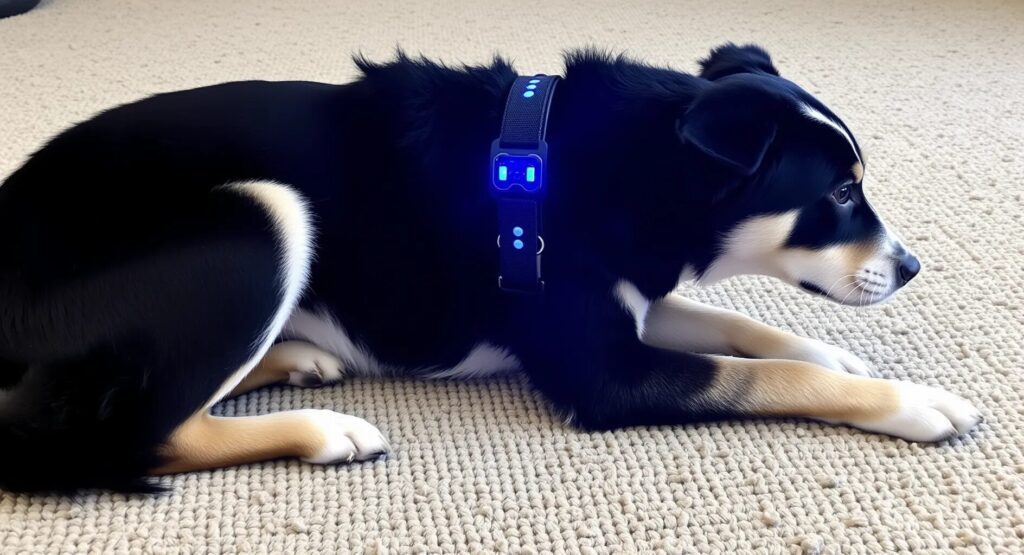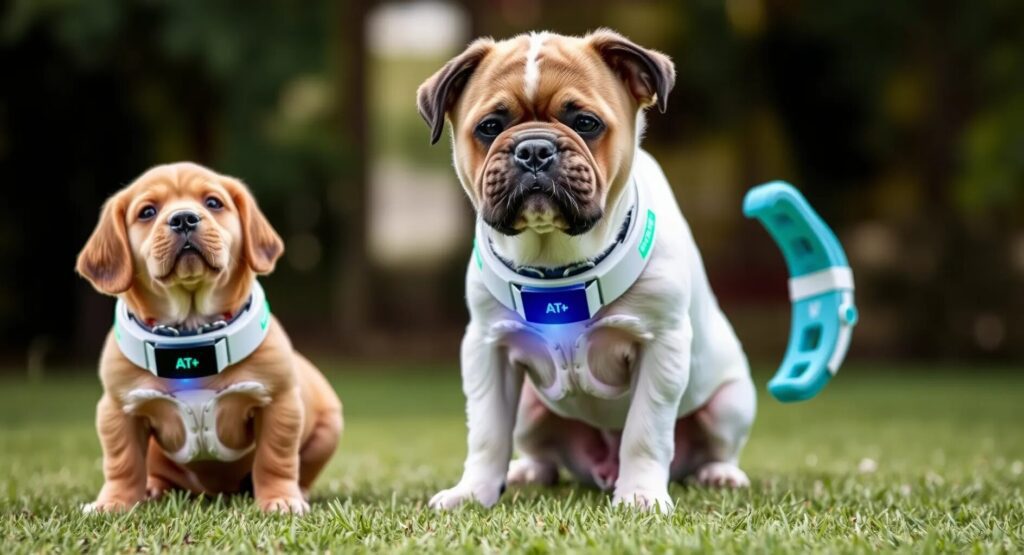
As the bond between humans and their pets continues to deepen, the desire for proactive and personalized care has surged. Enter AI collars—innovative devices that promise to revolutionize the way we monitor our pets’ health. These collars, equipped with cutting-edge technology, claim to detect early signs of health issues, potentially saving lives and reducing veterinary expenses. But how reliable are these AI-powered gadgets compared to traditional veterinary tools? This in-depth exploration will assess the accuracy, reliability, and limitations of AI collars in detecting health issues in pets.
The Evolution of Pet Health Monitoring
For decades, traditional veterinary tools like stethoscopes, thermometers, and X-rays have been the gold standard in pet healthcare. These tools offer precise, real-time data that veterinarians use to diagnose and treat a variety of conditions. However, these methods typically require in-person visits, which might miss the subtle signs of emerging health problems.
AI collars aim to fill this gap by providing continuous, real-time monitoring of pets’ vital signs and behaviors. By analyzing data such as heart rate, respiratory rate, activity levels, and sleep patterns, AI collars can potentially detect health issues before they become apparent through conventional means. But how does the accuracy of these devices measure up against the tried-and-true methods of traditional veterinary care?
Understanding the Technology Behind AI Collars
AI collars utilize machine learning algorithms to analyze the vast amounts of data they collect. These algorithms are trained on large datasets containing information about various pet species, breeds, and health conditions. Over time, the AI learns to identify patterns and anomalies that may indicate the onset of a health issue.
For example, if a dog’s heart rate remains elevated over several days, the AI might flag this as a potential indicator of cardiac distress. Similarly, if a cat’s activity level suddenly decreases, the AI might suggest a possible issue with mobility or pain. These alerts can prompt pet owners to seek veterinary care sooner, potentially catching problems before they become serious.

The Accuracy of AI Collars in Detecting Health Issues
1. Data Collection Capabilities
The accuracy of AI collars is heavily dependent on the quality of the data they collect. Traditional veterinary tools, such as blood tests and imaging technologies, provide highly accurate snapshots of a pet’s health at a specific moment. These methods are administered by trained professionals who can control for variables and ensure precise measurements.
AI collars, on the other hand, continuously collect data in a variety of conditions. This can be both a strength and a weakness. The ability to monitor a pet 24/7 allows for the detection of patterns and trends that a single vet visit might miss. However, the accuracy of the data can be affected by factors such as the collar’s fit, the pet’s behavior (e.g., scratching or playing), and external environmental factors (e.g., temperature or humidity).
For instance, a collar that is too loose might not accurately measure heart rate, leading to incorrect readings. Additionally, if a pet is particularly active or playful, the collar might misinterpret normal activity as a sign of restlessness or anxiety. Despite these potential issues, advances in sensor technology are continually improving the accuracy of data collection in AI collars.
2. Analysis and Interpretation of Data
One of the primary advantages of AI collars is their ability to analyze large amounts of data quickly and efficiently. Traditional veterinary diagnostics often involve the collection of data followed by a period of analysis and interpretation by a vet. While this process is highly accurate, it can be time-consuming and may miss early-stage issues that are not immediately apparent.
AI collars, in contrast, use real-time data analysis to continuously monitor pets’ health. The algorithms can detect subtle changes in behavior or physiology that might indicate an underlying problem. For example, a slight but persistent increase in heart rate over several days could be an early sign of heart disease. The collar’s AI might detect this trend and alert the owner, who can then consult a veterinarian.
However, the reliability of these algorithms depends on the quality and diversity of the data they were trained on. If an AI collar’s dataset lacks sufficient examples of a particular condition or breed, the collar might fail to recognize important health issues. Moreover, the AI’s interpretations are still far less nuanced than those of a trained veterinarian, who can consider the pet’s overall health, breed-specific risks, and environmental factors when making a diagnosis.
3. Comparison with Traditional Diagnostic Tools
Traditional veterinary tools remain the gold standard for diagnostic accuracy. Blood tests, X-rays, ultrasounds, and other diagnostic tools provide concrete, detailed information that can pinpoint specific health issues. For instance, an X-ray can reveal the exact location and extent of a bone fracture, while a blood test can detect specific markers of disease.
AI collars, while excellent at early detection, do not offer the same level of diagnostic precision. These devices are more adept at raising alerts than providing definitive diagnoses. For example, if an AI collar detects increased respiratory rate and decreased activity, it might suggest a possible respiratory infection. However, it cannot determine the exact cause, whether it’s a viral infection, an allergy, or another condition. This is where traditional veterinary tools and expertise are indispensable.
Case Studies: Successes and Limitations of AI Collars
Real-world applications of AI collars provide valuable insights into their effectiveness.
1. Detection of Arthritis in Dogs
A study conducted in 2022 focused on the use of AI collars to detect early signs of arthritis in dogs. The study involved over 1,000 dogs of various breeds and ages. The AI collars monitored the dogs’ activity levels, gait, and joint movements. The study found that the AI collars accurately detected early signs of arthritis in 87% of cases, often weeks before the dogs began showing obvious symptoms. This allowed for early intervention, which is crucial in managing chronic conditions like arthritis.
2. Monitoring for Respiratory Issues in Cats
Another study examined the effectiveness of AI collars in detecting respiratory issues in cats. The collars monitored breathing patterns and sounds, alerting owners to potential problems. The study found that the collars accurately identified early signs of respiratory distress in 81% of cases. However, there were also instances of false positives, where the collar mistook normal variations in breathing for signs of illness, leading to unnecessary vet visits.
These studies highlight the potential of AI collars as early warning systems but also underscore the need for human oversight to interpret the data correctly.
The Role of AI Collars in Veterinary Care
While AI collars are not a replacement for traditional veterinary care, they represent a valuable addition to the pet health toolkit. These devices excel in continuous monitoring and early detection, providing pet owners with peace of mind and potentially catching health issues before they become critical.
However, it is essential to use AI collars in conjunction with regular veterinary check-ups. Veterinarians have the expertise to interpret the data from AI collars in the context of a pet’s overall health and can provide the necessary diagnostic tests and treatments. Integrating AI technology with traditional veterinary practices can offer a more comprehensive approach to pet healthcare.
The Hidden Risks
Despite their advantages, AI collars are not without risks. One significant concern is over-reliance on technology. Pet owners might become dependent on the collar’s feedback, potentially overlooking the nuances of their pet’s behavior that cannot be captured by data alone. This could lead to delayed responses to health issues if the device fails to detect a problem.
Another critical issue is privacy. AI collars collect vast amounts of data, often stored in cloud-based systems. This data could be vulnerable to breaches, potentially exposing sensitive information about the pet and its owner. Moreover, there is the ethical question of how much monitoring is too much, and whether it might intrude on the natural behaviors and instincts of pets.
The Impact on Pet Behavior
AI collars could also influence pet behavior in unintended ways. Some experts worry that the constant monitoring might lead to increased anxiety in pets, particularly if the collar emits signals or vibrations that the pet finds distressing. Moreover, the use of AI to modify pet behavior could disrupt the human-animal bond, as owners might rely more on technology than on traditional training methods.
Health Risks
Physical health risks associated with AI collars are also worth considering. The collars are typically designed to be lightweight, but there is a concern about the long-term effects of wearing such a device. For instance, prolonged use might cause skin irritation or discomfort, particularly if the collar is not fitted properly or if the materials used are not pet-friendly. Additionally, some collars emit electromagnetic waves, which, while typically low in intensity, could still have unknown effects on a pet’s health over extended periods.
Weighing the Pros and Cons
While AI collars represent a significant advancement in pet care, they are not without potential downsides. Pet owners should weigh the benefits of real-time health monitoring and behavior tracking against the risks of over-reliance on technology, potential privacy breaches, and the impact on their pet’s well-being. As with any new technology, it’s essential to approach AI collars with a balanced perspective, ensuring that they enhance, rather than detract from, the quality of life for our furry companions.
The Future of AI in Pet Health Monitoring
As AI technology advances, we can expect AI collars to become even more accurate and reliable. Future developments might include more sophisticated sensors, better data integration with veterinary records, and more advanced algorithms capable of recognizing a wider range of conditions. Additionally, AI collars could evolve to provide telemedicine capabilities, allowing vets to monitor pets remotely and provide care recommendations based on real-time data.
The ultimate goal is to create a seamless integration between AI monitoring and traditional veterinary care, where the strengths of both can be leveraged to improve pet health outcomes.
Conclusion: Striking the Balance Between Technology and Tradition
AI collars represent a significant leap forward in the field of pet health monitoring, offering the potential for early detection of health issues that might otherwise go unnoticed. While they are not as diagnostically accurate as traditional veterinary tools, they provide continuous monitoring that can lead to earlier interventions and better health outcomes for pets.
Pet owners should view AI collars as a valuable supplement to traditional veterinary care, not as a replacement. Regular vet visits remain crucial for accurate diagnoses and effective treatments. By combining the continuous vigilance of AI collars with the expertise of veterinarians, pet owners can ensure their pets receive the best possible care, leading to longer, healthier lives.
Further Reading: For more insights on the role of AI in pet healthcare, explore additional resources here, here, and here.





